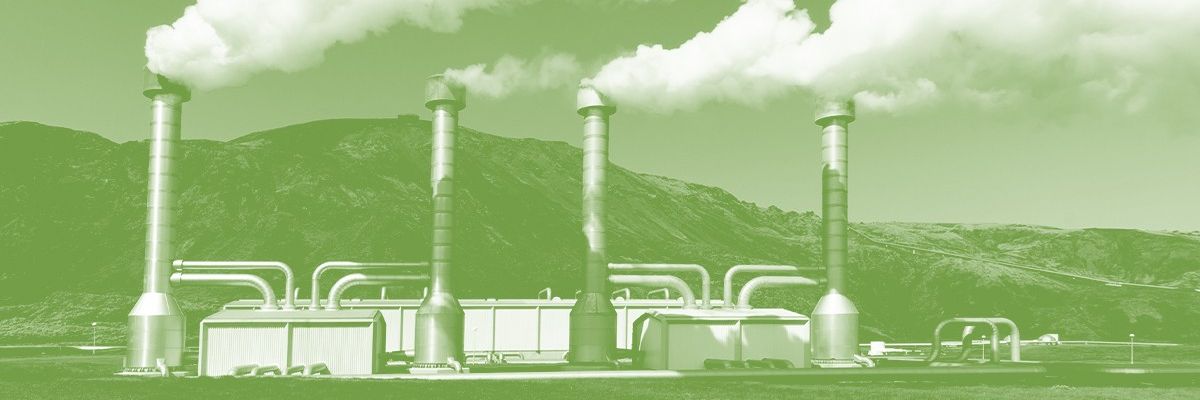You’re out of free articles.
Log in
To continue reading, log in to your account.
Create a Free Account
To unlock more free articles, please create a free account.
Sign In or Create an Account.
By continuing, you agree to the Terms of Service and acknowledge our Privacy Policy
Welcome to Heatmap
Thank you for registering with Heatmap. Climate change is one of the greatest challenges of our lives, a force reshaping our economy, our politics, and our culture. We hope to be your trusted, friendly, and insightful guide to that transformation. Please enjoy your free articles. You can check your profile here .
subscribe to get Unlimited access
Offer for a Heatmap News Unlimited Access subscription; please note that your subscription will renew automatically unless you cancel prior to renewal. Cancellation takes effect at the end of your current billing period. We will let you know in advance of any price changes. Taxes may apply. Offer terms are subject to change.
Subscribe to get unlimited Access
Hey, you are out of free articles but you are only a few clicks away from full access. Subscribe below and take advantage of our introductory offer.
subscribe to get Unlimited access
Offer for a Heatmap News Unlimited Access subscription; please note that your subscription will renew automatically unless you cancel prior to renewal. Cancellation takes effect at the end of your current billing period. We will let you know in advance of any price changes. Taxes may apply. Offer terms are subject to change.
Create Your Account
Please Enter Your Password
Forgot your password?
Please enter the email address you use for your account so we can send you a link to reset your password:
A guide to the year’s biggest environmental fight — and some of the most important changes that could result.

Pending catastrophe, the most important environmental policy debate in Washington this year will be about a set of questions that have come to be known as “permitting reform.”
Essentially, the government is poised to change the laws and procedures that govern how it approves new infrastructure, from highways to subways, wind farms to oil pipelines. The outcome of the debate will alter how America fights climate change and builds clean energy — and whether it further embraces fossil fuels.
Some of the oldest ideas in American environmental law are up for grabs. For the first time in decades, both parties want something to change about the country’s permitting process: Republicans want to loosen federal environmental reviews; while Democrats want to simplify and speed up how new electricity transmission is built, which would inherently boost renewables. That should make a deal possible — and indeed, lawmakers have entertained striking a bargain in a deal to raise the debt ceiling.
Yet permitting reform is unusually hard to follow. As of May 2023, at least six different bills are floating around Congress: House Democrats, Senate Democrats, House Republicans, and Senate Republicans have each proposed a bill (or two), as has Senator Joe Manchin of West Virginia, a key moderate who leads the Senate’s energy committee. Each of these bills consists of dozens of unique policies and proposals, and their goals range from hastening the end of oil to rejuvenating fossil fuels.
Below we’ve compiled a cheat sheet on some of the biggest questions in the 2023 permitting-reform debate without getting into the weeds of each separate bill. We’ll update it as the process continues.

It’s really hard to build new power lines in the United States — especially the kind of long-distance, high-voltage power lines that can move electricity across the country.
Because a shortage of power lines is holding back America’s renewables revolution. With a bigger, more interconnected grid, you can link the country’s windiest, sunniest areas to its power-hungry cities and suburbs, and balance out electricity demand across regions.
If America doesn’t double its rate of power-line construction, then 80% of the carbon benefits from Biden’s climate law will be lost, according to an analysis from Jesse Jenkins, a Princeton engineering professor.
Building a new transmission line requires getting approval from dozens of organizations along a proposed route, including every city, county, and state government. (Building a pipeline is much easier.) And utilities along the route have to agree about how to divide up its costs.
They want to give the Federal Energy Regulatory Commission, a bipartisan panel usually called FERC, the authority to decide where new interstate power lines should go and who should pay for them. (FERC already has that power over natural-gas pipelines.)
Democrats also want FERC to require each region to have a baseline amount of transmission with its neighbors, and to open an office that will manage and coordinate new transmission projects.
They haven’t proposed much, although the Senate GOP’s bill would prevent a president from blocking a cross-border pipeline or transmission line — a not-so-veiled attempt to help fossil fuels and avert another Keystone XL debacle.
His proposal would let FERC approve a new power line — but only if a state government has already blocked it for a year or more. He also wants FERC to set rules about who pays for a transmission project.

Every new power plant or renewable project has to enter the “interconnection queue” — effectively, a waiting list to get plugged into America’s jammed and overloaded power grid.
Because it keeps the grid from decarbonizing. The longer that new clean-energy projects have to wait in line, the longer that existing, dirty energy sources provide most of our electricity.
It now takes about four years for new projects to clear the interconnection queue, and more than 75% of renewable projects get canceled before they get to the front of the line.
At root, it’s because America doesn’t have enough power lines. But it’s also because in some places where the grid is clogged, utilities will force a wind or solar developer to pay not only for their own grid hookup, but also for crucial upgrades across the power grid — even those hundreds of miles from a project. That’s partially because the interconnect rules were written for companies building big coal and nuclear plants, not smaller renewable farms.
They want FERC to issue some ground rules about who can pay for grid upgrades, so that utilities can’t force renewable developers to foot the entire bill for them.
They haven’t proposed anything.
He hasn’t proposed anything.

Before a federal agency can build, approve, or change almost anything — whether it’s authorizing a space port or banning cars from a road in a city park — it must study how that action will impact the environment. It also must seek public comment and publish alternatives to its plan.
These studies, which are required by the National Environmental Policy Act (NEPA), can run thousands of pages long and take years to finish.
It’s not … depending on who you talk to. NEPA doesn’t require that the government actually change anything because of its study; only that it publishes it and seeks public comment. While environmentalists can’t use NEPA to block a polluting project, they can sue the government to get it to add information to an environmental-impact report, which can sometimes delay a project long enough for it to get canceled.
Some environmentalists say that NEPA is an important tool to waylay fossil-fuel development. (It’s how activists delayed the Dakota Access Pipeline for a year or so.) But others say that NEPA is now mostly slowing down the green transition, and that it has given “corporate interests and rich NIMBYs” a veto over rapid climate action.
It takes 4.5 years on average to finish an environmental-impact statement, the most stringent kind of NEPA review — but that’s an average. The NEPA review of renovations to Washington, D.C.’s main public-transit hub has taken eight years and counting.
When NEPA was first passed in 1969, supporters believed that it would give Americans an expansive new right to a healthy environment. Liberal lawyers hoped that NEPA might reorient all of federal policy in a greener direction, like the Civil Rights Act did for race and gender discrimination a few years earlier.
That didn’t happen. By the mid-1970s, the court system had hemmed in NEPA, turning it into a paperwork mandate, not a substantive right. That means NEPA lawsuits — of which there are more than 100 every year — feature a lot of bickering over procedural details.
Senate Democrats would impose a one-year deadline for light NEPA reviews and a two-year deadline for the most stringent reviews — but those deadlines would only apply to projects that fight or adapt to climate change, and there would be no penalty for missing them. The House bill asks the White House to write new rules for NEPA studies.
The GOP would require one- and two-year deadlines for NEPA studies, but for all types of projects, not just those related to climate change. If an agency missed those deadlines, then under the Senate GOP bill, the project being studied would immediately and irrevocably get approved. (The House GOP, meanwhile, would charge the offending agency a fine.)
Republicans would also impose a 300-page limit on NEPA studies for complex projects and a 150-page limit on most projects. Today, the average NEPA study is more than 500 pages long.
He’s proposed the same page limits and deadlines as Republicans, but with weaker penalties and no automatic approval.

Technically, NEPA doesn’t require that agencies look into whether a proposed federal project would worsen climate change. The Biden administration has required agencies to take it into account, but that could be reversed by a future administration.
It’s a little silly that the government would write a 500-page report about a project’s environmental impact — but not say anything about its carbon emissions.
Because every administration — and every agency — implements NEPA in a different way. The courts also set some ground rules about what a NEPA study must include, but the extremely conservative Supreme Court is unlikely to require NEPA studies to include climate effects anytime soon.
They want to require agencies to consider a project’s impact on the climate, including whether not doing the project would raise emissions.
House Republicans want to block agencies from considering climate change — or any negative environmental impacts more than 10 years in the future — when preparing a NEPA study.
Senate Republicans would also forbid FERC from considering whether any project would raise or lower emissions.
He hasn’t proposed anything.

NEPA fights never end. Americans generally have up to six years to sue the government over a NEPA study, and the ensuing court battles can take years to resolve.
Depends on who you ask. The lack of a deadline can create an aura of uncertainty around public projects: Years after a federal agency approves an infrastructure project (including a clean-energy project), that project can still be challenged and blocked in court — even if construction on it has already started.
For some progressives, that doesn’t seem so bad, because it lets environmental lawyers drag fossil-fuel companies into lengthy NEPA lawsuits over proposed pipelines or refineries. But other progressives argue that most new energy projects will be zero carbon anyway, so NEPA fights allow conservatives and NIMBYs to veto clean energy.
Because Congress didn’t envision the modern permitting process when it first passed NEPA, and the law doesn’t contain a statute of limitations.
Senate Democrats want to impose a three-year limit on bringing a NEPA lawsuit, and they’d immediately elevate a NEPA suit to the local federal appeals court. House Democrats haven’t proposed anything.
Republicans in both chambers want to add a three- or four-month statute of limitations to NEPA. Senate Republicans would go further and require the courts to rule on any NEPA case within six months. These litigation deadlines could sharply limit environmentalists’ ability to fight fossil-fuel infrastructure.
His bill would add a five-month statute of limitations to NEPA.

The federal offices that handle most of the NEPA-related paperwork don’t have enough employees and suffer high staff turnover, which slows down their ability to quickly finish the easiest studies.
According to some progressives, a lack of funding for the agencies that implement NEPA is the biggest driver of permitting-related slowdowns. They argue that the most common kind of NEPA studies are completed in a year or so, and that only the most stringent NEPA studies regularly drag on. (Plenty of federal actions, such as building a new train station or transmission line, require a stringent NEPA study.)
When legal scholars at the University of Utah looked at 41,000 NEPA decisions of all kinds made by the U.S. Forest Service, they found that most delays were caused by agency understaffing, turnover, or delays in getting information from applicants. They also blamed unstable budgets, inadequate technology, and conflicting guidance from other laws, such as those governing historical preservation.
A decade of federal cost-cutting, among other reasons. The Department of the Interior lost 6% of its staff during the Trump administration and has only gained 2% since. FERC has also struggled to hire qualified workers.
Senate Democrats would make every agency identify its NEPA workforce needs annually and then give it the power to hire accordingly. House Democrats would let FERC pay people more than normal federal law allows.
House Republicans would require the National Park Service, the Bureau of Land Management, and the U.S. Forest Service to prepare an outreach plan for hiring new permitting employees.
He’s proposed allowing FERC to exceed the federal payscale, too.

New geothermal plants could generate a huge amount of zero-carbon electricity. Yet securing a permit to install a geothermal plant on federal lands — where the richest geothermal resources exist — can take years.
Because it’s comparatively easy to drill for oil and natural gas on federal land: Oil and gas drilling is categorically exempt from parts of NEPA, and a special office in the Bureau of Land Management handles fossil-fuel permits. So even though geothermal firms use the same equipment as oil and gas companies — but don’t create the same carbon emissions — it is much harder to drill for geothermal energy, and therefore much more expensive.
About 90% of “viable geothermal resources” — places where it makes sense to drill for Earth’s heat — are located on federal lands in the West. This isn’t parkland, to be clear, but government-owned land now used for ranching, hunting, mining, or recreation.
Because geothermal is a new industry. Until recent improvements in drilling, geothermal only made sense in a few parts of the country. Now it could be used more widely.
Senate Democrats want the Interior Department to make sure geothermal drilling permits are handled in the same way that oil-and-gas drilling permits are.
House Republicans would exempt some geothermal projects from having to get permits at all. And Senate Republicans would tell the Interior Department to defer to state law when granting new geothermal permits.
While supportive of geothermal power, he hasn’t proposed anything on this issue.
Log in
To continue reading, log in to your account.
Create a Free Account
To unlock more free articles, please create a free account.
A lookahead with Heatmap’s own Emily Pontecorvo, Matthew Zeitlin, and Jillian Goodman.
2025 has been a rough year for climate and energy news. But enough about that. Let’s start looking at 2026!
On this week’s episode of Shift Key, Rob is joined by some of Heatmap’s writers and editors to discuss our biggest stories and predictions for 2026 — what we’re tracking, what could surprise us, and what could happen next. We also discuss a recent op-ed in The New York Times arguing that Democrats should work more closely with the U.S. oil and gas industry. Today’s panel includes Heatmap’s founding staff writer Emily Pontecorvo, staff writer Matthew Zeitlin, and deputy editor Jillian Goodman.
Shift Key is hosted by Robinson Meyer, the founding executive editor of Heatmap, and Jesse Jenkins, a professor of energy systems engineering at Princeton University. Jesse is off this week.
Subscribe to “Shift Key” and find this episode on Apple Podcasts, Spotify, Amazon, or wherever you get your podcasts.
You can also add the show’s RSS feed to your podcast app to follow us directly.
Here is an excerpt from our conversation:
Robinson Meyer: I was thinking when Matt was talking about how different the current moment is from 2020 that back then, here was this idea that there was some risk, maybe, that some costs would go up a little. But inflation had been out of the picture for so long that we were in an environment where unemployment was the concern and not the price level, and so the idea that prices might go up a tiny bit in exchange for economic activity seemed like an okay trade.
And I would actually say, this is where I think there’s some potential for a comeback for more traditional types of environmental and climate activism in 2026, which is, the unemployment rate is currently 4.6%, as of a release last week, which historically, it hasn’t been above 4.6% very much in the past several decades. And when it is above 4.6% usually means unemployment’s about to spike.
And I think in a world where we switch from talking about affordability to talking about unemployment and a lack of general economic activity — especially in a world where AI is a big deal and people are very worried about job loss from AI, suddenly all the ideas about generating economic activity by doing kind of pro-social decarbonization activities are going to swing right back into the conversation.
And we know what a Donald Trump administration is like when prices are increasing by 3% a year, and that is, he’s not very popular. We don’t know what a Donald Trump administration is like when unemployment’s at 5%, or 5.5%. And if that were to happen, the floor could really drop out, and we could see a huge swing back to the type of policies that we were talking about not so long ago.
Mentioned:
Trump Uses ‘National Security’ to Freeze Offshore Wind Work
Matthew Yglesias’ op-ed: Obama Supported It. The Left in Canada and Norway Does. Why Don’t Democrats?
Emily on California cities’ new heat pump rules
The House Just Passed Permitting Reform. Now Comes the Hard Part.
This episode of Shift Key is sponsored by …
Heatmap Pro brings all of our research, reporting, and insights down to the local level. The software platform tracks all local opposition to clean energy and data centers, forecasts community sentiment, and guides data-driven engagement campaigns. Book a demo today to see the premier intelligence platform for project permitting and community engagement.
Music for Shift Key is by Adam Kromelow.
Forget data centers. Fire is going to make electricity much more expensive in the western United States.
A tsunami is coming for electricity rates in the western United States — and it’s not data centers.
Across the western U.S., states have begun to approve or require utilities to prepare their wildfire adaptation and insurance plans. These plans — which can require replacing equipment across thousands of miles of infrastructure — are increasingly seen as non-negotiable by regulators, investors, and utility executives in an era of rising fire risk.
But they are expensive. Even in states where utilities have not yet caused a wildfire, costs can run into the tens or hundreds of millions of dollars. Of course, the cost of sparking a fire can be much higher.
At least 10 Western states have recently approved or are beginning to work on new wildfire mitigation plans, according to data from E9 Insights, a utility research and consulting firm. Some utilities in the Midwest and Southeast have now begun to put together their own proposals, although they are mostly at an earlier phase of planning.
“Almost every state in the West has some kind of wildfire plan or effort under way,” Sam Kozel, a researcher at E9, told me. “Even a state like Missouri is kicking the tires in some way.”
The costs associated with these plans won’t hit utility customers for years. But they reflect one more building cost pressure in the electricity system, which has been stressed by aging equipment and rising demand. The U.S. Energy Information Administration already expects wholesale electricity prices to increase 8.5% in 2026.
The past year has seen a new spate of plans. In October, Colorado’s largest utility Xcel Energy proposed more than $845 million in new spending to prepare for wildfires. The Oregon utility Portland General Electric received state approval to spend $635 million on “compliance-related upgrades” to its distribution system earlier this month. That category includes wildfire mitigation costs.
The Public Utility Commission of Texas issued its first mandatory wildfire-mitigation rules last month, which will require utilities and co-ops in “high-risk” areas to prepare their own wildfire preparedness programs.
Ultimately, more than 140 utilities across 19 states have prepared or are working on wildfire preparedness plans, according to the Pacific Northwest National Laboratory.
It will take years for this increased utility spending on wildfire preparedness to show up in customers’ bills. That’s because utilities can begin spending money for a specific reason, such as disaster preparedness, as soon as state regulators approve their plan to do so. But utilities can’t begin passing those costs to customers until regulators review their next scheduled rate hike through a special process known as a rate case.
When they do get passed through, the plans will likely increase costs associated with the distribution system, the network of poles and wires that deliver electricity “the last mile” from substations to homes and businesses. Since 2019, rising distribution-related costs has driven the bulk of electricity price inflation in the United States. One risk is that distribution costs will keep rising at the same time that electricity itself — as well as natural gas — get more expensive, thanks to rising demand from data centers and economic growth.
California offers a cautionary tale — both about what happens when you don’t prepare for fire, and how high those costs can get. Since 2018, the state has spent tens of billions to pay for the aftermath of those blazes that utilities did start and remake its grid for a new era of fire. Yet it took years for those costs to pass through to customers.
“In California, we didn’t see rate increases until 2023, but the spending started in 2018,” Michael Wara, a senior scholar at the Woods Institute for the Environment and director of the Climate and Energy Policy Program at Stanford University, told me.
The cost of failing to prepare for wildfires can, of course, run much higher. Pacific Gas and Electric paid more than $13.5 billion to wildfire victims in California after its equipment was linked to several deadly fires in the state. (PG&E underwent bankruptcy proceedings after its equipment was found responsible for starting the 2018 Camp Fire, which killed 85 people and remains the deadliest and most destructive wildfire in state history.)
California now has the most expensive electricity in the continental United States.
Even the risk of being associated with starting a fire can cost hundreds of millions. In September, Xcel Energy paid a $645 million settlement over its role in the 2021 Marshall fire, even though it has not admitted to any responsibility or negligence in the fire.
Wara’s group began studying the most cost-effective wildfire investments a few years ago, when he realized the wave of cost increases that had hit California would soon arrive for other utilities.
It was partly “informed by the idea that other utility commissions are not going to allow what California has allowed,” Wara said. “It’s too expensive. There’s no way.”
Utilities can make just a few cost-effective improvements to their systems in order to stave off the worst wildfire risk, he said. They should install weather stations along their poles and wires to monitor actual wind conditions along their infrastructure’s path, he said. They should also install “fast trip” conductors that can shut off powerlines as soon as they break.
Finally, they should prepare — and practice — plans to shut off electricity during high-wind events, he said. These three improvements are relatively cheap and pay for themselves much faster than upgrades like undergrounding lines, which can take more than 20 years to pay off.
Of course, the cost of failing to prepare for wildfires is much higher than the cost of preparation. From 2019 to 2023, California allowed its three biggest investor-owned utilities to collect $27 billion in wildfire preparedness and insurance costs, according to a state legislative report. These costs now make up as much as 13% of the bill for customers of PG&E, the state’s largest utility.
State regulators in California are currently considering the utility PG&E’s wildfire plan for 2026 to 2028, which calls for undergrounding 1,077 miles of power lines and expanding vegetation management programs. Costs from that program might not show up in bills until next decade.
“On the regulatory side, I don’t think a lot of these rate increases have hit yet,” Kozel said.
California may wind up having an easier time adapting to wildfires than other Western states. About half of the 80 million people who live in the west live in California, according to the Census Bureau, meaning that the state simply has more people who can help share the burden of adaptation costs. An outsize majority of the state’s residents live in cities — which is another asset, since wildfire adaptation usually involves getting urban customers to pay for costs concentrated in rural areas.
Western states where a smaller portion of residents live in cities, such as Idaho, might have a harder time investing in wildfire adaptation than California did, Wara said.
“The costs are very high, and they’re not baked in,” Wara said. “I would expect electricity cost inflation in the West to be driven by this broadly, and that’s just life. Climate change is expensive.”
The administration has already lost once in court wielding the same argument against Revolution Wind.
The Trump administration says it has halted all construction on offshore wind projects, citing “national security concerns.”
Interior Secretary Doug Burgum announced the move Monday morning on X: “Due to national security concerns identified by @DeptofWar, @Interior is PAUSING leases for 5 expensive, unreliable, heavily subsidized offshore wind farms!”
There are only five offshore wind projects currently under construction in U.S. waters: Vineyard Wind, Revolution Wind, Coastal Virginia Offshore Wind, Sunrise Wind, and Empire Wind. Burgum confirmed to Fox Business that these were the five projects whose leases have been targeted for termination, and that notices were being sent to the project developers today to halt work.
“The Department of War has come back conclusively that the issues related to these large offshore wind programs create radar interference, create genuine risk for the U.S., particularly related to where they are in proximity to our East Coast population centers,” Burgum told the network’s Maria Bartiromo.
David Schoetz, a spokesperson for Empire Wind's developer Equinor, told me the company is “aware of the stop work order announced by the Department of Interior,” and that the company is “evaluating the order and seeking further information from the federal government.” Schoetz added that we should ”expect more to come” from the company.
This action takes a kernel of truth — that offshore wind can cause interference with radar communication — and blows it up well beyond its apparent implications. Interior has cited reports from the military they claim are classified, so we can’t say what fresh findings forced defense officials to undermine many years of work to ensure that offshore wind development does not impede security or the readiness of U.S. armed forces.
The Trump administration has already lost once in court with a national security argument, when it tried to halt work on Revolution Wind citing these same concerns. The government’s case fell apart after project developer Orsted presented clear evidence that the government had already considered radar issues and found no reason to oppose the project. The timing here is also eyebrow-raising, as the Army Corps of Engineers — a subagency within the military — approved continued construction on Vineyard Wind just three days ago.
It’s also important to remember where this anti-offshore wind strategy came from. In January, I broke news that a coalition of activists fighting against offshore wind had submitted a blueprint to Trump officials laying out potential ways to stop projects, including those already under construction. Among these was a plan to cancel leases by citing national security concerns.
In a press release, the American Clean Power Association took the Trump administration to task for “taking more electricity off the grid while telling thousands of American workers to leave the job site.”
“The Trump Administration’s decision to stop construction of five major energy projects demonstrates that they either don’t understand the affordability crises facing millions of Americans or simply don't care,” the group said. “On the first day of this Administration, the President announced an energy emergency. Over the last year, they worked to create one with electricity prices rising faster under President Trump than any President in recent history."
What comes next will be legal, political and highly dramatic. In the immediate term, it’s likely that after the previous Revolution victory, companies will take the Trump administration to court seeking preliminary injunctions as soon as complaints can be drawn up. Democrats in Congress are almost certainly going to take this action into permitting reform talks, too, after squabbling over offshore wind nearly derailed a House bill revising the National Environmental Policy Act last week.
Heatmap has reached out to all of the offshore wind developers affected, and we’ll update this story if and when we hear back from them.
Editor’s note: This story has been updated to reflect comment from Equinor and ACP.